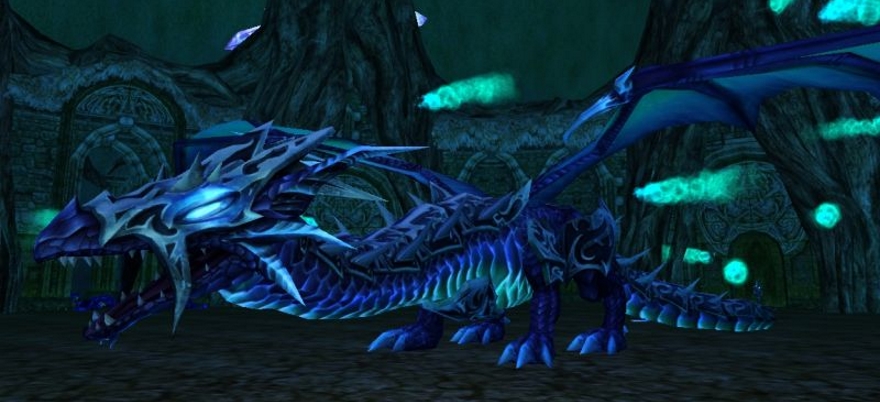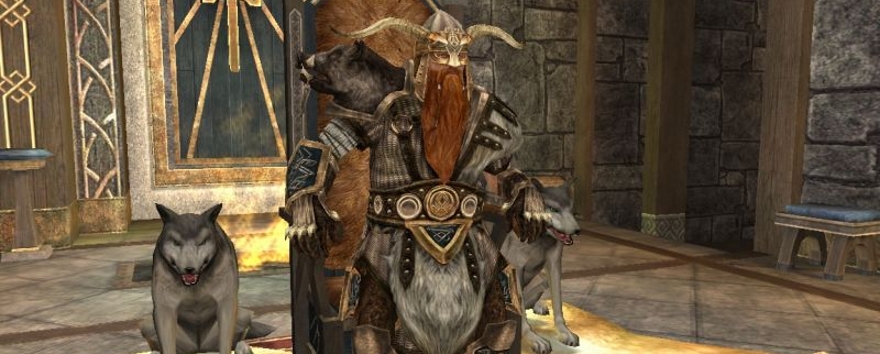
Today, we take a trip to England, but not the England of our timeline. No, this is the England-That-Could-Have-Been, the England of King Arthur, Excalibur and pointy-hatted Vikings. This is the England of fairy tales and legends and blocky 2001-era polygon models. It is the England of three realms constantly jockeying for supremacy and power. It is the England of Dark Age of Camelot.
This country is a pretty awesome place to live, even though the property values are way, way down after the last 18 marauding hordes trampled through the neighborhood. It doesn’t matter if it’s only a model — it still inspires us to break out into song anyway.
Arr vee arr? What, is this a pirate game?
It’s hard to remember that when 2001 rolled around, you didn’t have hundreds of MMORPGs to choose from, including countless F2P imports from Asia. You had about a half-dozen titles. Six games, all fantasy, and all largely centered around group-oriented PvE grinding. Ultima Online offered strong sandbox features, EverQuest had the lion’s share of popularity, Asheron’s Call did funky things with skills, and Lineage encouraged you to grind until your eyes bled.
But developers saw the potential for this fledgling MMORPG genre, and by the time the new decade was underway, dozens of additional games were in the making, with the first batch of new titles hitting the scene in 2001, including Anarchy Online, Motor City Online, RuneScape, World War II Online… and Dark Age of Camelot. These weren’t “second generation” MMOs — that term was reserved for 2004’s EQII and WoW — but they represented a step up from the barebones basics of EverQuest and the like.
Mythic Entertainment, a tiny company in Fairfax, VA, knew that it had to do something to make its fantasy title stand out in a field already well-populated by swords-and-sorcery games. Using an IP that was already in the public domain — the Arthurian legend — Mythic decided to go a different route than PvE raids and instead focus on PvP combat as the core of its new game. The company created a game world that was divided up into three countries that would engage in constant warfare against each other. Albion (“Albies”) took after Camelot and the Arthurian story, Hibernia (“Hibs”) centered itself around Celtic folklore, and Midgard (“Mids”) went with Norse mythology.
This new type of PvP was named, logically enough, realm vs. realm (or RvR) to signify a conflict that had a larger purpose than the immediate battlefield. Players teamed together to take keeps and expand their realm’s territory for pride, honor and (of course) rewards. Due to the fluid and ever-changing nature of PvP, DAoC promised an infinite amount of content as the battle raged between the factions. The three realms had a brilliant system of checks-and-balances to it; if one realm got too powerful, then it could be taken down by the other two realms teaming up in a temporary alliance.
Compared to today’s lengthy dev cycles, the development time (18 months) and costs ($2.5 million) for DAoC were tiny, but the dev team nonetheless cranked out a fully functional MMO that caught the eye of many. It helped that part of the Mythic team had previously worked on a MUD called Darkness Falls and used this codebase for its new project.
“What also helped us was not only the MUD codebase, but the fact that we had also created about a dozen games already and had a client engine to build off as well as experience with the rendering engine from good folks at NetImmerse in NC,” Mark Jacobs told us. “Between the MUD codebase, client/server tech (which also gave us a great working base for our network communications), we did have a good place to start. The years of doing games with Kesmai and Engage Games Online really helped a lot.”
DAoC had a mind-boggling amount of classes spread across the three realms, with each class specializing in a particular role. Because of the RvR focus of the game, classes were expected to group and function together rather than solo.
Unfortunately, most of the meaningful PvP took place at the level cap (50), which took players a while to reach. The leveling game focus on PvE and the end game focus on RvR turned some players off as they wished to jump into PvP right away instead of “paying their dues” to get there.
Even so, Dark Age of Camelot’s launch was well-received by both press and gamers, with the title being praised for its intricate crafting system and ongoing story campaigns. While it never rose above the quarter-million subscriber mark, it proved that a PvP-centric MMO could hold its own in a PvE world.
The bomb: Trials of Atlantis
Mention “Trials of Atlantis” in a room full of DAoC players and expect to see a lot of wincing. After two well-received expansions (Shrouded Isles in 2002, Housing in 2003), the development team stumbled in bringing out its biggest expansion to date. On the surface, the team’s intentions were noble by offering horizontal character growth through the acquisition of items that you could level (artifacts) and additional abilities by climbing up through Master Levels.
Unfortunately, artifacts and Master Levels represented grind of the worst sort — and you had to engage deeply in the PvE side of the game to advance in them. Because they were seen as necessary for PvP (you were at a disadvantage without them), players put their RvR career on hold to plow through PvE raids and grind up both artifacts and Master Levels.
Trials of Atlantis became so reviled by both players and (believe it or not) members of the developer team that DAoC eventually came out with a classic server type that eschewed the Atlantis expansion and its features. (Unfortunately, server merges would eventually cause the extinction of this ruleset.)
 Darkness Falls rises
Darkness Falls rises
While Trials of Atlantis may have been DAoC’s “jump the shark” moment, the earlier Darkness Falls was the polar opposite: a widely praised feature of the game that became one of its crown jewels. Introduced in patch 1.49, Darkness Falls was a special dungeon with unique rules and killer loot.
Unlike most dungeons, Darkness Falls was meant to be fought over for the privilege of looting its depths. It would only open its doors to the realm that currently had the largest share of outposts, which meant that what happened on the RvR battlefield directly impacted access to this dungeon. In an interesting twist, if members of a realm were in the dungeon while control of it was wrested away by a competing realm, the dungeon would allow the former owners to stay (at least, until they were killed or decided to leave). So adventurers scouting through Darkness Falls could bump into player enemies at any turn, and fierce fights ensued.
Darkness Falls became so popular for DAoC that several years later Mythic attempted to strike gold again by reviving the feature for Warhammer Online with its own RvR dungeon in its Land of the Dead expansion.
Gracefully aging
Like most older MMOs, DAoC saw its subscriber base dwindle and development slow somewhat as the decade drew to a close, and the game hasn’t seen a full-fledged expansion since 2006. In September 2009, Mythic merged all of the servers into one — Ywain — in hopes of keeping the population at a critical mass for enjoyable PvP.
In 2014, Electronic Arts shut down Mythic, but what could have been a disaster for Dark Age of Camelot ended up being a blessing. DAoC and Ultima Online were transferred over to Broadword Online Games, a studio made of many former Mythic developers. Since then, DAoC has received top-notch care and attention, including a major “New New Frontiers” patch and a multi-month Otherworlds campaign.
“DAoC still provides the premier realm vs. realm system available with a depth of gameplay that doesn’t exist elsewhere,” Producer John Thornhill told us last year. “Three iconic, lore-driven realms, 45 playable classes, distinct melee and magic-based combat, and a huge, perpetual war that never resets.”
So what are your favorite Dark Age of Camelot memories? Share them in the comments section!
 Believe it or not, MMOs did exist prior to World of Warcraft! Every two weeks, The Game Archaeologist looks back at classic online games and their history to learn a thing or two about where the industry came from… and where it might be heading.
Believe it or not, MMOs did exist prior to World of Warcraft! Every two weeks, The Game Archaeologist looks back at classic online games and their history to learn a thing or two about where the industry came from… and where it might be heading.















